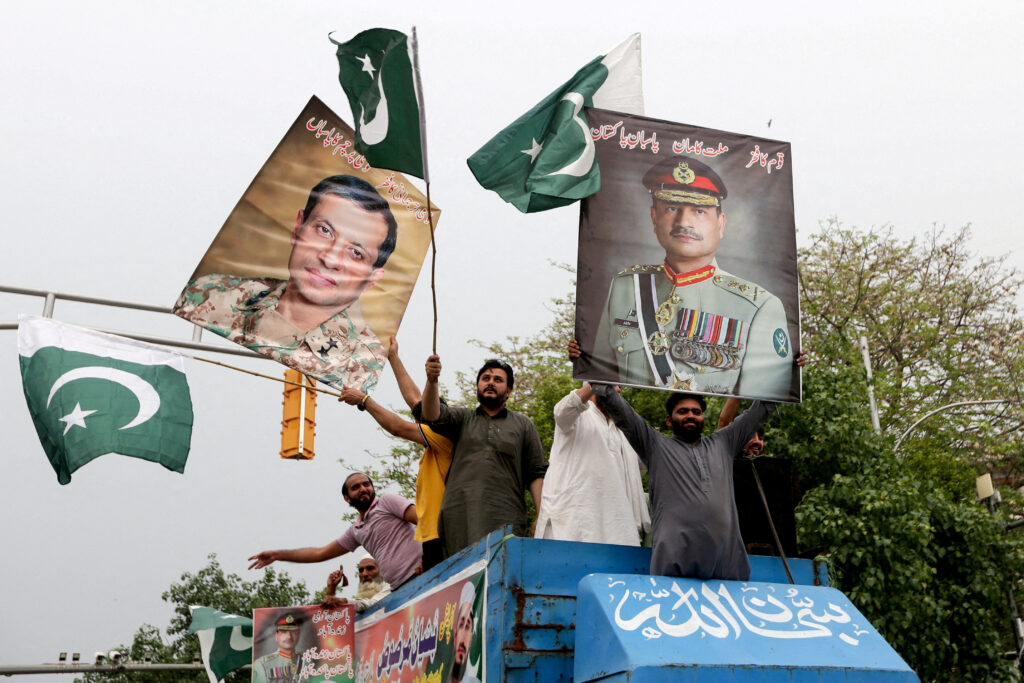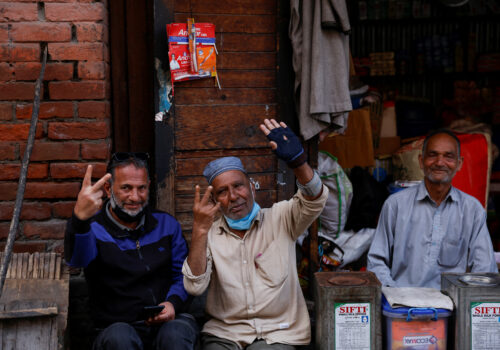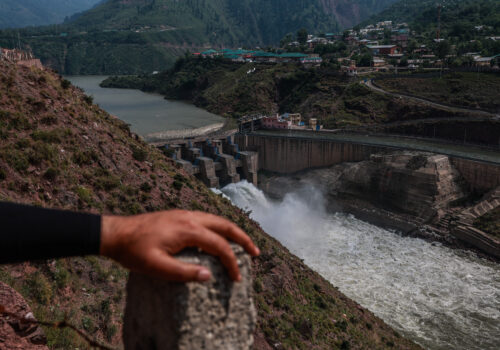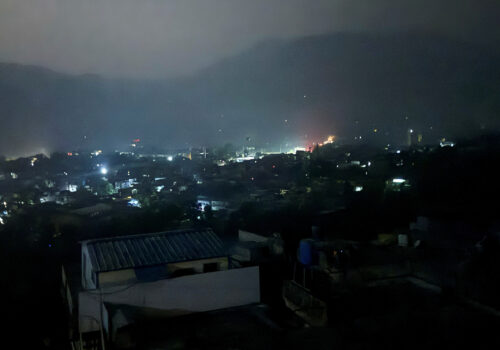This month’s escalation between India and Pakistan—the most severe since 1971—was more than a bilateral flashpoint. It revealed how international policy frameworks meant to deter crisis now primarily serve to defer it. India’s Operation Sindoor, launched in response to the Pahalgam terror attack, and Pakistan’s retaliatory Operation Bunyan Marsoos escalated into four days of missile and drone strikes, targeting airbases and civilian zones across both sides of the Line of Control in Kashmir. The conflict’s resolution was driven by a mix of battlefield calculations, intelligence warnings, and external diplomatic mediation—including renewed US attention.
Yet even as the United States expands strategic cooperation with India—publicly endorsing its counterterrorism priorities—it continues to extend Major Non-NATO Ally (MNNA) status to Pakistan. This gives Pakistan a privileged military cooperation position under US law and eligibility for loans, agreements, and priority weapons delivery, along with closer ties to NATO countries’ military establishments—all without any preconditions or accountability on counterterrorism. This dual-track posture risks US credibility and incentivizes ambiguity over accountability. It sustains a structural pattern: provocation by militant actors, calibrated retaliation, and rapid external intervention—without a chance for any party to go to the root of the problems.
As such, the United States should pursue a conditional revocation of Pakistan’s MNNA status—suspending it while outlining concrete benchmarks for its restoration. Revoking Pakistan’s MNNA status would reinforce an ongoing recalibration in US regional policy—aligning security privileges with counterterrorism performance, encouraging institutional accountability within Pakistan, and acknowledging the growing weight of US-India strategic cooperation without foreclosing future engagement with Islamabad.
The US counterterrorism role in South Asia
For over two decades, US counterterrorism policy in South Asia has combined growing alignment with India and strategic privileges for Pakistan. This contradiction has normalized a repetitive cycle of terror attacks on India, targeted retaliation, and a US desire to be part of the solution but no institutional changes that could meaningfully shift the landscape.
To his credit, US President Donald Trump has worked toward effecting change—which was visible after India’s 2019 revocation of Article 370, which removed the Jammu and Kashmir region’s special constitutional status. The Trump administration refrained from public criticism of this move, framing it as a bilateral matter. Similarly, after the 2019 Pulwama attack, the United States condemned the terrorist act and urged Pakistan to dismantle terror infrastructure on its soil. The first Trump administration also played a pivotal role in maintaining Pakistan on the Financial Action Task Force grey list, pressuring Islamabad to act against terrorist financing networks.
The Trump administration’s endorsement of India’s strategic autonomy, especially in counterterrorism operations, marked a shift toward recognizing India’s capability to address its security challenges independently. India’s less formal and less codified designation as a Major Defense Partner (but not a MNNA) further underscored this approach. It resonates with Trump’s broader foreign policy doctrine, which favors burden-sharing and encourages allies to take greater responsibility for their defense. Ensuring a strategically autonomous India is not just a US interest, but a potential milestone achievement for Trump.
However, the most immediate obstacle is a US security policy that continues to privilege Pakistan’s military establishment. The Pahalgam attack occurred in close proximity to Vice President JD Vance’s visit to India, drawing historical parallels to the 2000 Chittisinghpura massacre, which took place hours before President Bill Clinton’s arrival. While causality is debatable, the recurrence of such timing highlights how extremist violence in the region can intersect with high-visibility diplomatic moments, complicating crisis management and signaling.
While confidence-building measures between India and Pakistan—such as the 1991 Agreement on Advance Notice of Military Exercises and the 2005 nuclear confidence-building measure framework—remain in place, they have proven insufficient during episodes of heightened tension. In recent crises, including in 2019 and 2025, India has kept key partners, including the United States, informed ahead of taking action to manage signaling risks and minimize escalation. Pakistan has also engaged international stakeholders, though typically only in the context of post-escalation outreach. These differing approaches to crisis communication carry implications for how third-party actors interpret intent and calibrate their response.
The contrasting diplomatic practices of India and Pakistan directly influence how external actors, particularly the United States, interpret each country’s intent and determine their diplomatic responses during crises. Given these differences in crisis management behavior, Washington’s continued extension of MNNA status to Pakistan without clear criteria related to counterterrorism or escalation management creates ambiguity. But US strategic designations like MNNA should periodically be reassessed and clearly linked to behaviors—such as transparency, proactive communication, and restraint—that concretely support regional stability.
Besides, Pakistan’s designation as an MNNA in 2004 was intended to anchor counterterrorism logistics during the US war in Afghanistan. With the war over and US dependence on Pakistani transit routes effectively ended, the core justification for Islamabad’s MNNA status has eroded. At the same time, China now accounts for over 70 percent of Pakistan’s arms imports, while US lawmakers—citing both strategic drift and insufficient counterterrorism compliance—have repeatedly questioned the designation’s utility. Rebalancing US priorities does not require substituting Pakistan with India but rather ensuring that strategic privileges reflect Washington’s current alignment—not legacy entitlements.
How the US can use its economic leverage
As a frequently used quip goes, “Most states have armies. In Pakistan, the army has a state.” That inversion isn’t rhetorical—it defines a structural barrier to Pakistan’s economic recovery. Through business entities such as the Fauji Foundation, Bahria Foundation, and Army Welfare Trust, the military retains a significant commercial presence across the banking, real estate, fertilizer, and logistics industries. While not unique among developing states, the scale and opacity of this role pose obstacles to reform. Repeated International Monetary Fund (IMF) programs have flagged structural issues—such as privatization bottlenecks, tax distortions, and subsidy burdens—as impediments to stabilization.
In fiscal year 2023, Pakistan’s debt servicing obligations absorbed over 80 percent of federal revenue, foreign exchange reserves fell below four billion dollars, and inflation peaked near 30 percent, though it has now eased to around 5 percent. These economic pressures sharply limit the policy options available to civilian leaders. The United States could more effectively support structural economic reforms in Pakistan by explicitly linking privileges—such as MNNA status—to concrete progress on economic governance and institutional accountability.
In this context, revoking MNNA would not rupture relations but reframe them around contemporary realities. The United States remains a key voice in international financial institutions and investment forums that shape Pakistan’s recovery path. From IMF conditionality to multilateral development flows, economic leverage is now the primary channel of influence. Rather than permanently revoking MNNA, Washington should set clear, achievable economic and governance benchmarks, creating a credible pathway for Islamabad to regain or enhance strategic privileges upon meeting certain standards.
Stability through strategic restraint and recalibration
The May 10 pause in fighting reflected a recalibration in South Asia’s strategic balance. Pakistan entered negotiations under mounting pressure: its military had sustained visible losses and continued escalation—while a one-billion-dollar tranche of IMF funding remained pending—threatened deeper fiscal and political instability.
India, in contrast, had secured a clear tactical upper hand through Operation Sindoor. Yet its swift endorsement of the cease-fire reflected strategic restraint. The decision allowed India to reinforce deterrence, bring the Indus Water Treaty to the renegotiation table, and redraw red lines. Prime Minister Narendra Modi’s statements that India “will not tolerate any nuclear blackmail” and “will not differentiate between the government sponsoring terrorism and the masterminds of terrorism” signals a new red line—in the instance of a repeat attack, India could target the Pakistani military in addition to terrorist camps.
To prevent similar escalations with these new red lines having been drawn, Washington must reassess the strategic benefits it extends in the region. Conditionally revoking Pakistan’s MNNA status would clarify that US defense privileges are tied to demonstrated counterterrorism cooperation and economic reform, rather than past strategic alignment. While some warn that this move could drive Pakistan closer to China, retaining MNNA status without accountability has already reduced US leverage. If the goal is influence, the United States should anchor its partnerships with conditionality—not ambiguity.
Srujan Palkar is the global India fellow at the Atlantic Council.
Mrittika Guha Sarkar is the India policy consultant at Horizon Engage.
Further reading
Sat, May 10, 2025
Experts react: India and Pakistan have agreed to a shaky cease-fire. Where does the region go from here?
New Atlanticist By
With the fog of war still hovering over South Asia, Atlantic Council experts explore what's to come.
Sat, May 10, 2025
By focusing on water, extremism, and trade, India and Pakistan can turn this cease-fire into an enduring peace
New Atlanticist By Shuja Nawaz
Having raised domestic emotions to a high pitch, leaders on both sides will want to take a much-needed pause and then begin negotiations.
Tue, May 6, 2025
Experts react: India just launched airstrikes against Pakistan. What’s next?
New Atlanticist By
Atlantic Council experts share insights on India's missile strikes on Pakistan, which came two weeks after a terrorist attack targeting Indians in Pahalgam.
Image: People carry posters showing the pictures of Chief of Army Staff of Pakistan Asim Munir, (R) along with Ahmed Sharif Chaudhry, Director General of Inter-Service Public Relations wing of Pakistan Armed Forces, as they take part in a rally in support of Pakistan Army, day after the ceasefire announcement between India and Pakistan, in Lahore, Pakistan, May 11, 2025. REUTERS/Mohsin Raza.




